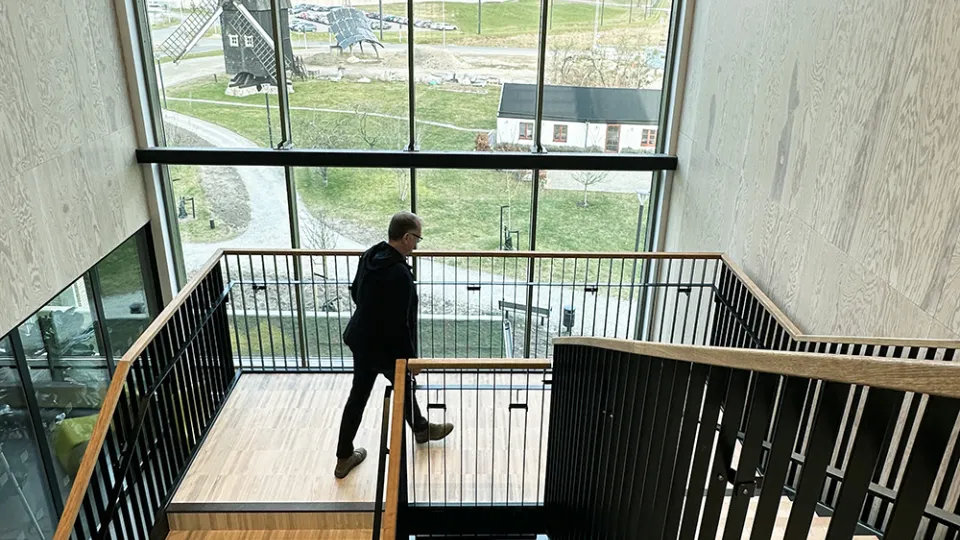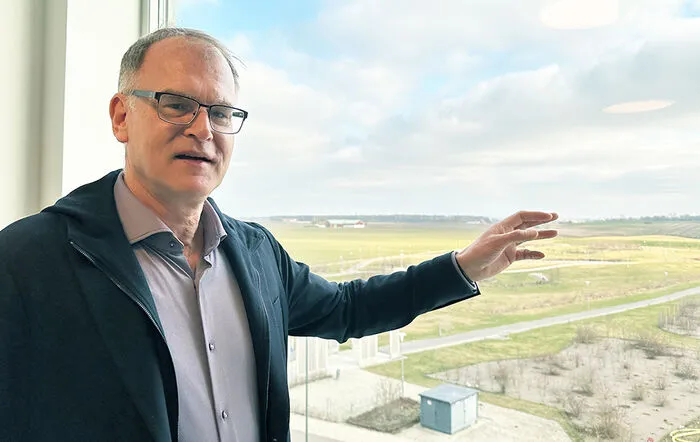Lars-Erik Wernersson, professor of nanoelectronics at LTH, has taken various initiatives in recent years, together with his colleagues, to establish Lund University as a player to be reckoned with in semiconductor research. The efforts have been successful and contributed to the establishment of the Swedish Chips Competence Centre (SCCC), a competence centre within the EU programme Chips Act, which is run jointly by Lund University, Chalmers University of Technology/Chalmers Industriteknik, and KTH and funded by Vinnova.
Lars-Erik Wernersson is now ready for the next step when the research group in nanolectronics co-locates by moving to Science Village.
”The move means leaving the familiar and stepping into a new context. The new location allows us to bring together researchers and resources in an innovative and creative environment,” says Lars-Erik Wernersson.
Improving the conditions for semiconductor research
Erik Renström, Vice-Chancellor of Lund University, hopes that the establishment will improve conditions for Swedish semiconductor research, saying:
”The change of place can be seen as an exploration of how we best organise ourselves for future generations. This is the first step in our contribution to long-term development.”
In addition to semiconductor activities linked to SCCC, the move also includes the Vinnova-funded competence centre Act and several EU projects.
This puts us in a unique position to quickly understand material properties and to drive Swedish technology forward.
“Just as the competence centres strengthen the semiconductor ecosystem in Sweden and the EU, we in the semiconductor research in Lund believe that the location at Science Village strengthens the semiconductor area through access to a dynamic environment where cutting-edge research and innovation can be integrated in a completely new way,” says Lars-Erik Wernersson.
The proximity to the infrastructures of Science Village is one of the advantages mentioned by Lars-Erik Wernersson:
“The semiconductor researchers will be able to interact daily with the researchers at MAX IV and ESS, and with other activities that can strengthen the research. This puts us in a unique position to quickly understand material properties and to drive Swedish technology forward.“
The establishment is also important for strengthening collaboration with industry, which is very keen to advance its position on semiconductors and strengthen its expertise in the field, says Annika Olsson, Dean of the Faculty of Engineering at Lund University. She says:
“Proximity to advanced infrastructure can provide competitive advantages and create better conditions for research to be used in commercial applications. For LTH, this means a focal point for semiconductor research, which in the long term will enable growth through new innovations and company formations.“
A community to strengthen Swedish competitiveness
Vectura fastigheter is responsible for the operation of The Loop. Daniel Fex, Business Development Manager, sees the semiconductor group as a positive addition to the business:
“We are very pleased that the semiconductor research team, led by Lars-Erik Wernersson, has moved to The Loop and has become part of the community that we are now creating in Science Village to help strengthen Swedish competitiveness.“




